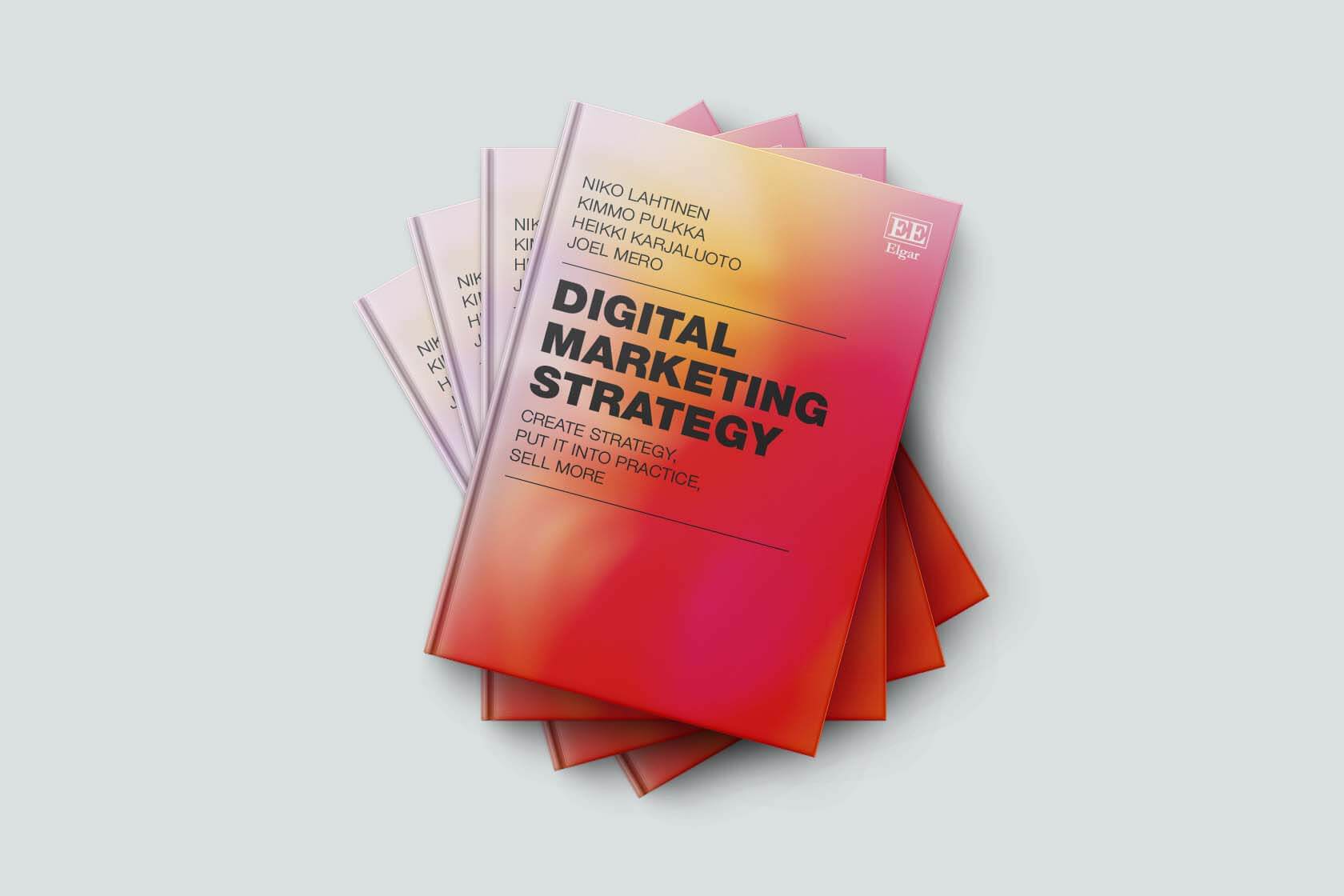Why don’t your customers recognize your business or products when they come across them? Why do my competitors get committed customers and we don’t?
These are good questions and reasons can vary, but one likely reason is that you pique customer’s interest and he doesn’t see anything special about your product or service, compared to a competitor.
One way to solve the above issues is to think about what kind of message you want to convey to your customer and what is the first thing you want your customer to think of. when they see your brand. With a digital brand strategy, you clarify the message you want your brand to convey.
In this blog, I’m going to go over why your business needs a digital brand strategy, how it’s done, and how you make sure that a carefully made strategy isn’t wasted.
How do I know my company needs a digital brand strategy?
Because the digital brand strategy is designed to strengthen your company’s brand and clarify the desired message, it is important in almost all situations. Let’s go through a few situations when it would be recommended at the latest.
1. The company does not have a consistent visual appearance
In my previous blog I think it’s important that your digital brand look is recognizable as a whole, I went through the reasons why it’s important that the brand look is consistent and clearly distinguishable from competitors.
Condensed: the customer learns to recognize your company’s brand, which enhances your advertising and increases brand familiarity. This, on the other hand, increases the value of the brand. In addition, you will be able to stand out from the grey mass of your competitors and raise interest in your customer’s eyes.
2. The brand look does not match the price of the product
If you look cheap but ask for a clear premium for your products or services, no one will take you seriously. An example of this could be considered by a clothing company that would like to ask for €60 for a white t-shirt, but advertising uses -40% markings and a lot of red and yellow color.
No one will get the impression from that type of advertising that this is a high-quality premium product. In this case, it would be wiser to use a lot of clean colors or all white and empty space. It would be a good idea to look at the model from Calvin Klein, for example.
Similarly, many companies selling design products invest a lot in the brand. For example, Iittala and Finlayson, two of the author’s favourite brands from Finland, can be taken as an example of a Finnish company.
When buying luxury products, the customer buys the experience, which starts when they first find your brand on Google. If that experience differs significantly at some point in the purchase process, the possibility of repurchase is reduced. That’s why it’s important that you convey the same visual image of your website all the way to the product packaging.
3. None of my competitors invest in the brand
The assumption is that if none of your competitors invest in the brand, that you don’t have to either. However, this is a false assumption, as this is a great opportunity to stand out from your competitors easily.
In addition, at least one of your competitors has invested in the brand and probably their turnover also shows that. A good example here could be terraforming companies. Almost no company in the industry seems to have thought much about its brand look, apart from a few examples. For example, you could take a company called VSMV, see the website here: A cleaner future – VMSVy (in this case, I mainly compare the appearance of websites with competitors).
Fix the above issues with digital brand strategy
When there is a clear plan and instruction for something, it is easier to implement.
The digital brand strategy determines what your company’s main message should be. With different visual elements, it clarifies your message and defines the image your brand should evoke.
Let’s take the . where you arrive on the cleaning company’s website and your first image is stuffy and confusing. This is due to the colours used on the website and the fact that everything is really tightly positioned, and there is not enough empty space between the elements of the websites. How likely are you to buy a cleaning service on this website? How soon will you leave that website?
Here you can see the importance of first impressions. and how much it affects whether . the user does the next step with your brand.
When you bring out your brand’s main message clearly and visuals support text content, you’ll evoke strong perceptions of your brand. When this happens from the start, the customer will enjoy your brand for a long time.
What is the digital brand strategy process like?
The main purpose of a digital brand strategy is to combine the company’s strategy and story with its visual appearance.
We are going to implement this with SDM in five different stages:
- Investigation and definition
- Strategy and story
- Design
- Implementation
- Publication and further development
Let’s go over these steps in more detail, point by point.

1. Investigation and definition
First, it’s important to know who you’re selling to and what they want. This is why we first make buyer personalities, where we define the factors that lead to the purchase of buyer persona.
By defining the drivers, we know what interests your buyer persona and how we can get their attention.
From these, we look for connecting factors to avoid different buyer personalities, so we know what is the most important thing that affects the specific buyer personality and start developing your brand towards it. This is because the brand’s main message cannot be suitable for all personas at the same time. Later, for example through advertising, we will focus on other personas.
In addition to buyer personality, we define what your market is like. Who your competitors are, and what your situation is in relation to the competitors. What they look like and how they address buyer personalities with their brand.
2. Strategy and story
Why does your brand exist? This is the most important question you need to be able to answer in order for a digital brand strategy to really benefit. A good way to start thinking about the reason a brand exists is through the following questions:
- What do we do and how?
- What are our values?
- What do we have our brand for?
- What sets us apart?
- What is our persona?
- Set the goals.
By the time you are able to answer these questions, you are well on your way to making a strategy, and the next step is to bring out your message through visual design.
3. Design
Before anything is done, it is important to create clear visions of how we can visually express your message.
This is what we’re going to do by doing three different stylescapes, i.e. visual suggestions of what a brand look might look like. The idea is to quickly get you an idea of what your brand might look like. Stylescape defines guidelines for what your ultimate brand look will be like.
Based on these, the final stylescape will be developed, after which we will move on to the implementation phase.
4. Implementation
Based on a good plan, it’s easy to start working on your new brand look, and you don’t have time to guess.
Based on stylescape, we are going to implement a brand book to guide you on how to keep your brand look consistent. The book contains instructions on what your overall appearance looks like, what colors you use, what fonts you use, what kind of images you use for your communication.
In addition, your new logo may be included, if you want one, and the presentation and documentary templates for the future. At this point, we also make sure that your brand works on digital marketing channels and is easy to scale, as the digital world is changing all the time.
5. Publication and further development
Now that you have a new digital brand strategy and instructions on how to implement it through buyer personality, it’s time to put the strategy into practice.
You will now be able to plan your advertising on the basis of a strategy and make all your offers clearly look like you.
Now you get to test your brand in practice. Do your customers get the image they wanted? Will they still remember you in a month?
Since brand development is a long process, it would be good to have a development meeting about three months after the brand’s launch. In the development meeting, we will review whether the update of the look was successful for the target group and how we can start further developing it.
The brand strategy process is inspired by an excellent book written by Michael Johnson, branding In Five and a Half Steps.
Summary
The digital brand contains many things, and there are many different interpretations of its exact definition. However, one thing a brand is what kind of image or feeling it evokes in the customer. The purpose of a digital brand strategy is to steer these customer-awakening images towards it, I want your company’s brand to define.
This doesn’t happen overnight, but if you start work right away, your business will start to evoke certain perceptions among your customers, and you will start to perceive your brand more clearly.
Infer more about visual design or contact us, let’s discuss how we can develop the image your brand evokes to reflect the reality you want.











